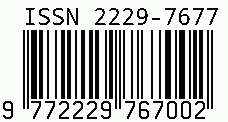
International Journal on Science and Technology
E-ISSN: 2229-7677
•
Impact Factor: 9.88
A Widely Indexed Open Access Peer Reviewed Multidisciplinary Bi-monthly Scholarly International Journal
Plagiarism is checked by the leading plagiarism checker
Call for Paper
Volume 16 Issue 3
July-September 2025
Indexing Partners



















Enhancing Fake Image Detection with a Hybrid Approach of Deep Learning and Image Forensics
| Author(s) | Sonia Yadav, Amresh Kumar |
|---|---|
| Country | India |
| Abstract | With the rapid growth of digital content creation and manipulation tools, verifying the authenticity of visual media has become a growing concern across several domains such as journalism, law enforcement, politics, and social media. The widespread availability of advanced image editing software, coupled with AI-based techniques like Generative Adversarial Networks (GANs), has led to a surge in highly realistic fake images and deepfakes, making traditional methods of detection increasingly ineffective. This research addresses this evolving challenge by proposing a hybrid model that integrates the interpretability of traditional image forensic techniques with the adaptability and learning capacity of Convolutional Neural Networks (CNNs).Traditional forensic methods, such as Photo-Response Non-Uniformity (PRNU), Error Level Analysis (ELA), and lighting inconsistency checks, are well-known for their transparency and ease of interpretation. These approaches typically analyze intrinsic image features like compression artifacts, sensor noise, and inconsistencies in color or geometry. However, they often struggle when detecting content generated by sophisticated AI models, which can produce highly realistic forgeries that bypass classical detection techniques.On the other hand, CNNs have shown significant promise in identifying subtle patterns and anomalies that are often invisible to the human eye and traditional algorithms. These models automatically learn hierarchical features from large datasets, allowing them to generalize across multiple types of manipulations. However, CNNs face challenges in terms of interpretability and are vulnerable to adversarial attacks, which can deceive the model with carefully crafted inputs.This study proposes a hybrid framework that leverages the strengths of both paradigms. By combining CNNs with traditional forensic cues, the model achieves both high accuracy and improved transparency. Experimental evaluations demonstrate the model's robustness across multiple datasets and manipulation types. The results show a significant improvement over standalone methods, confirming the effectiveness of the proposed hybrid approach in detecting fake images. This work contributes to the development of more dependable and explainable systems, suitable for deployment in real-world, high-stakes environments. |
| Field | Engineering |
| Published In | Volume 16, Issue 2, April-June 2025 |
| Published On | 2025-06-05 |
| DOI | https://doi.org/10.71097/IJSAT.v16.i2.6063 |
| Short DOI | https://doi.org/g9pz8z |
Share this


CrossRef DOI is assigned to each research paper published in our journal.
IJSAT DOI prefix is
10.71097/IJSAT
Downloads
All research papers published on this website are licensed under Creative Commons Attribution-ShareAlike 4.0 International License, and all rights belong to their respective authors/researchers.

